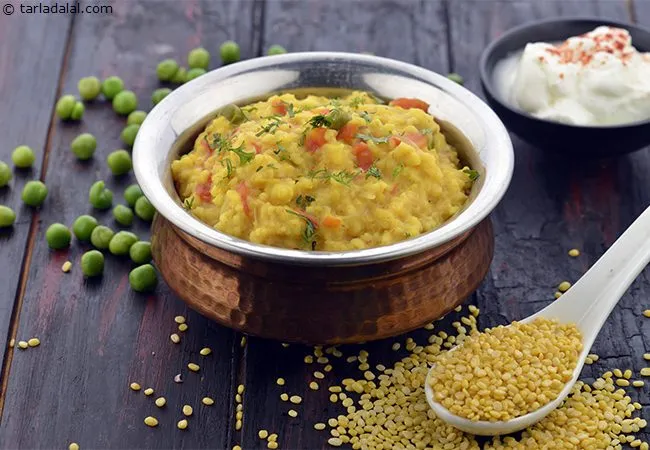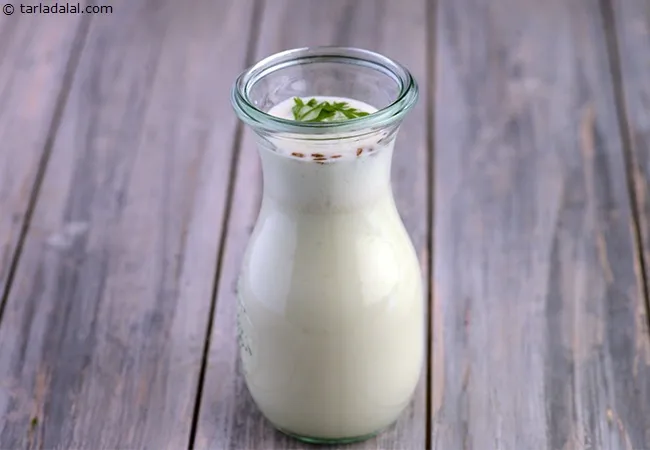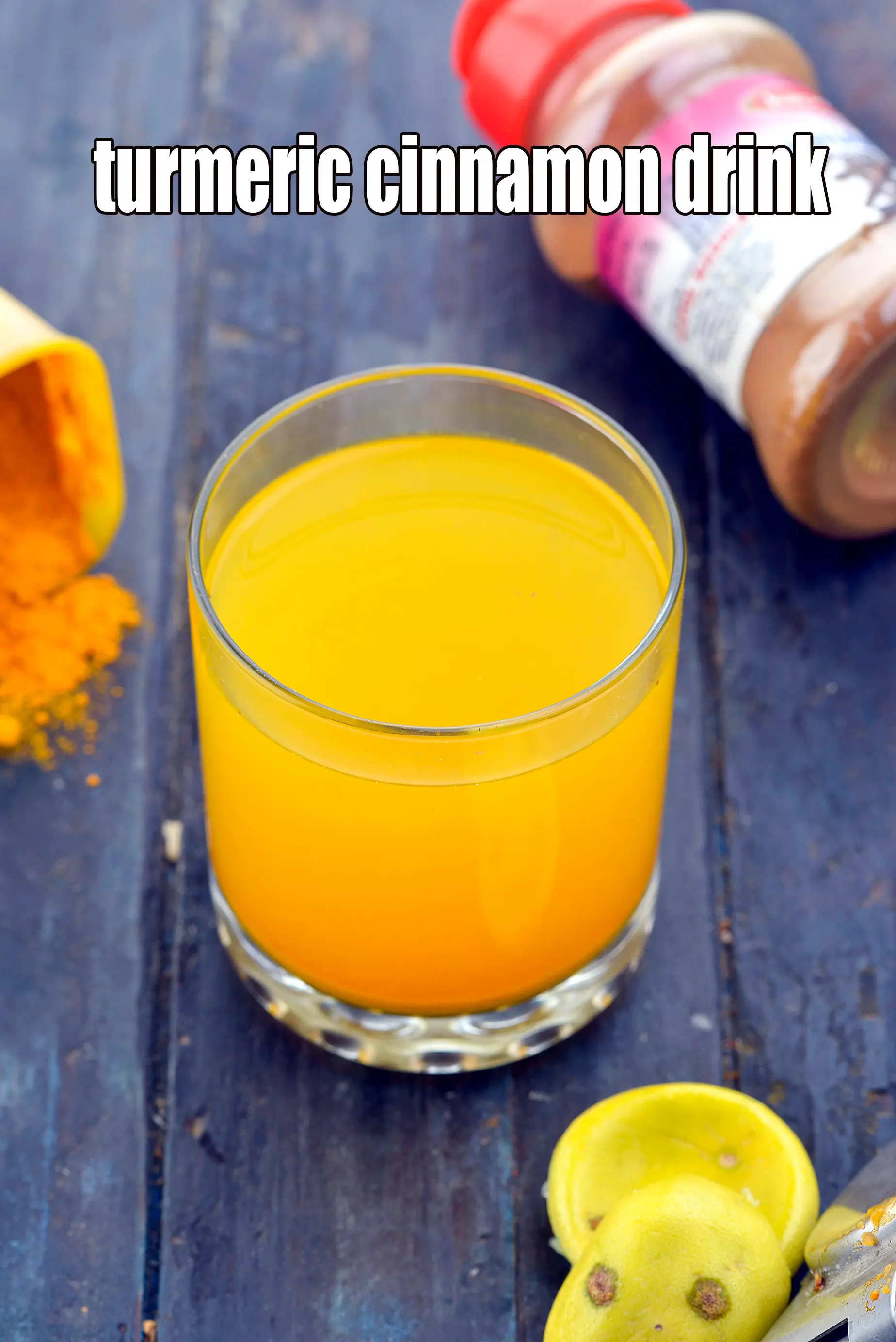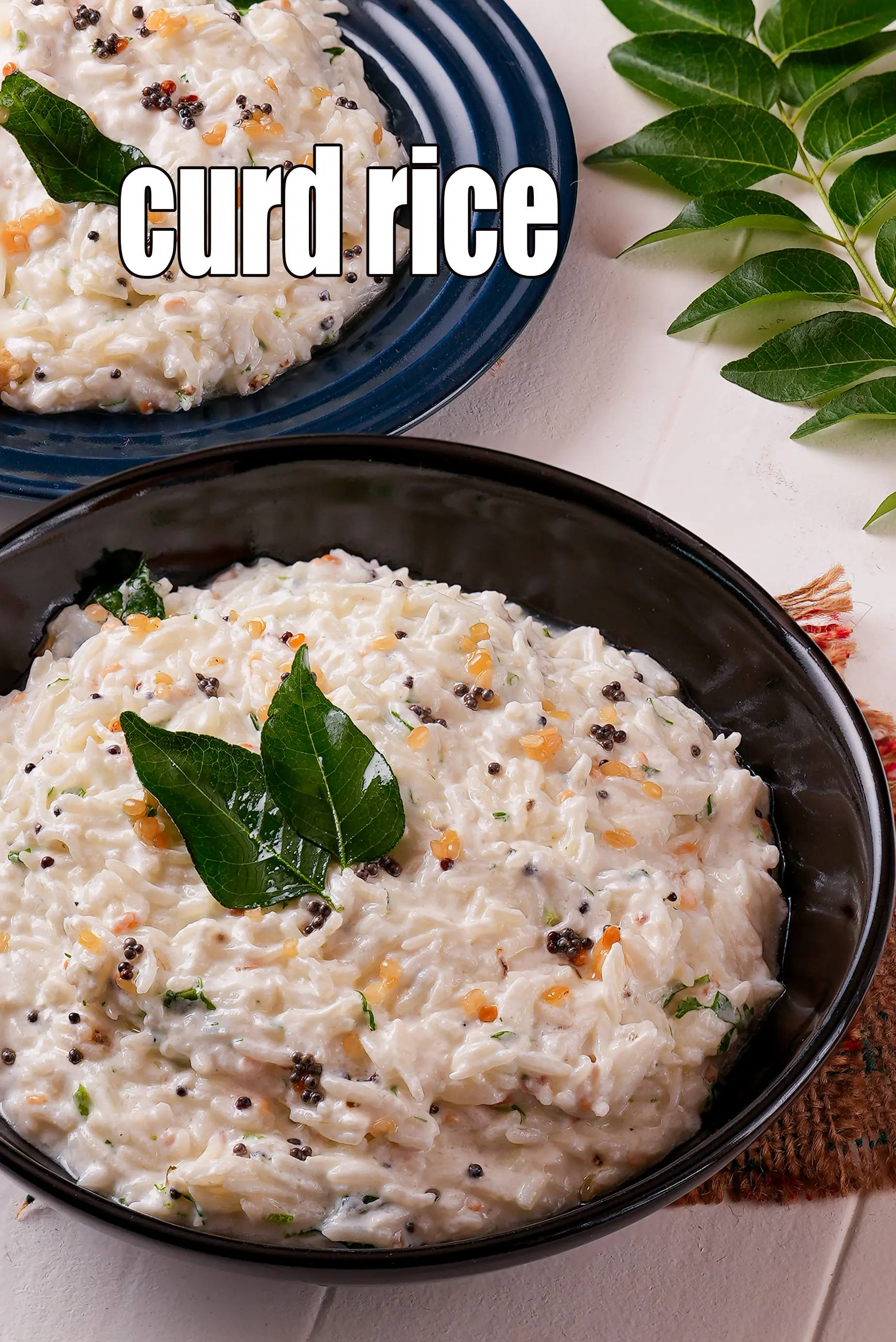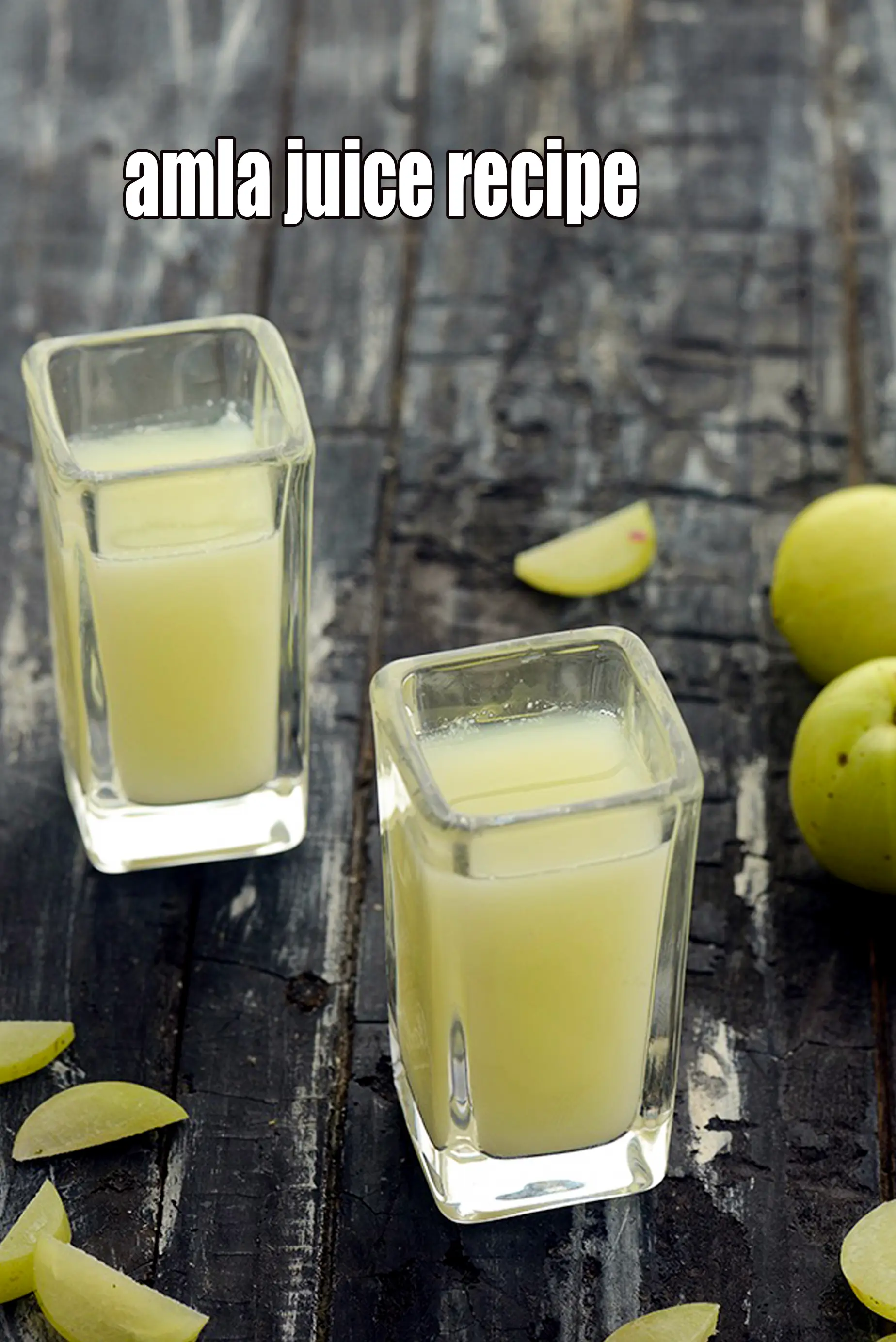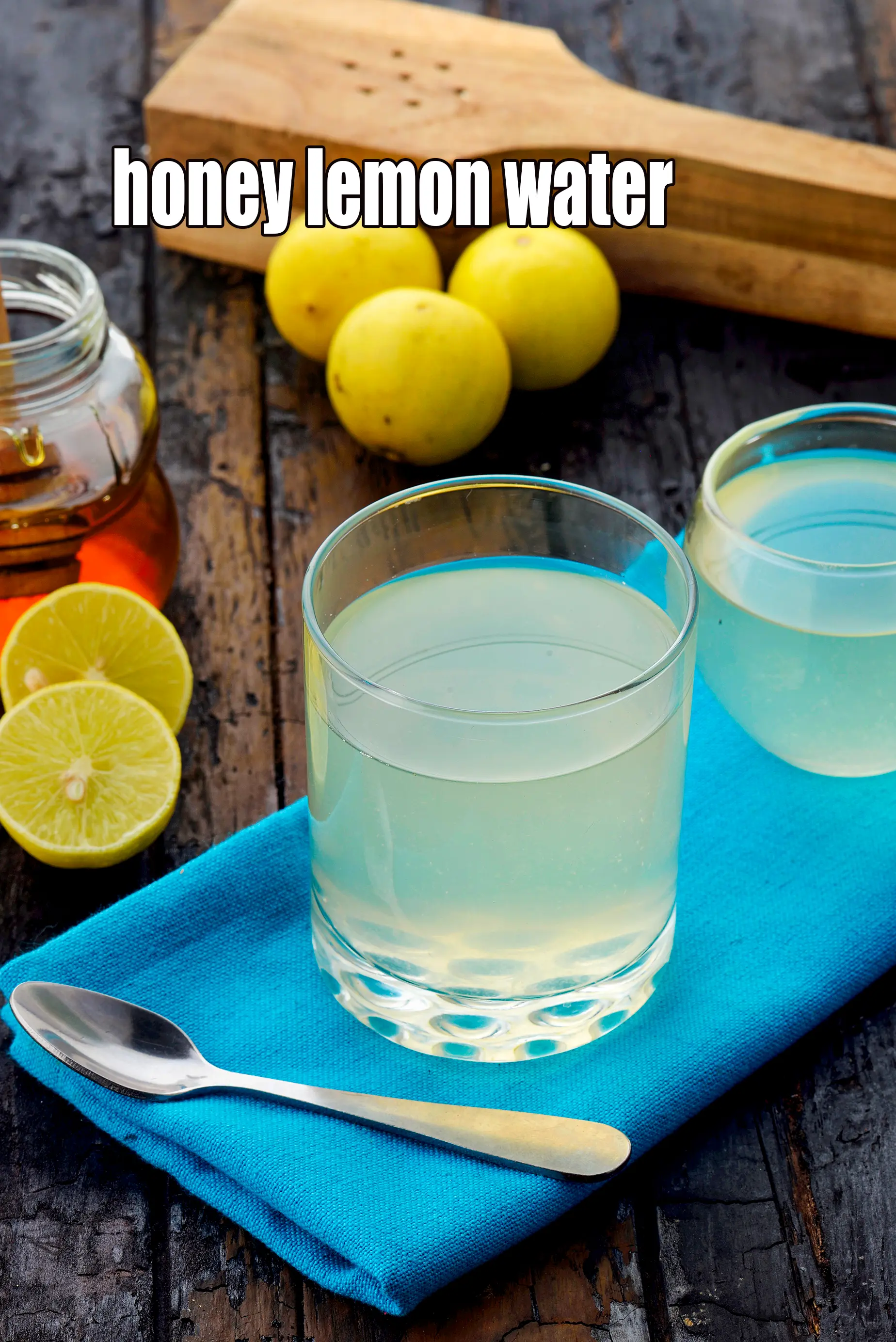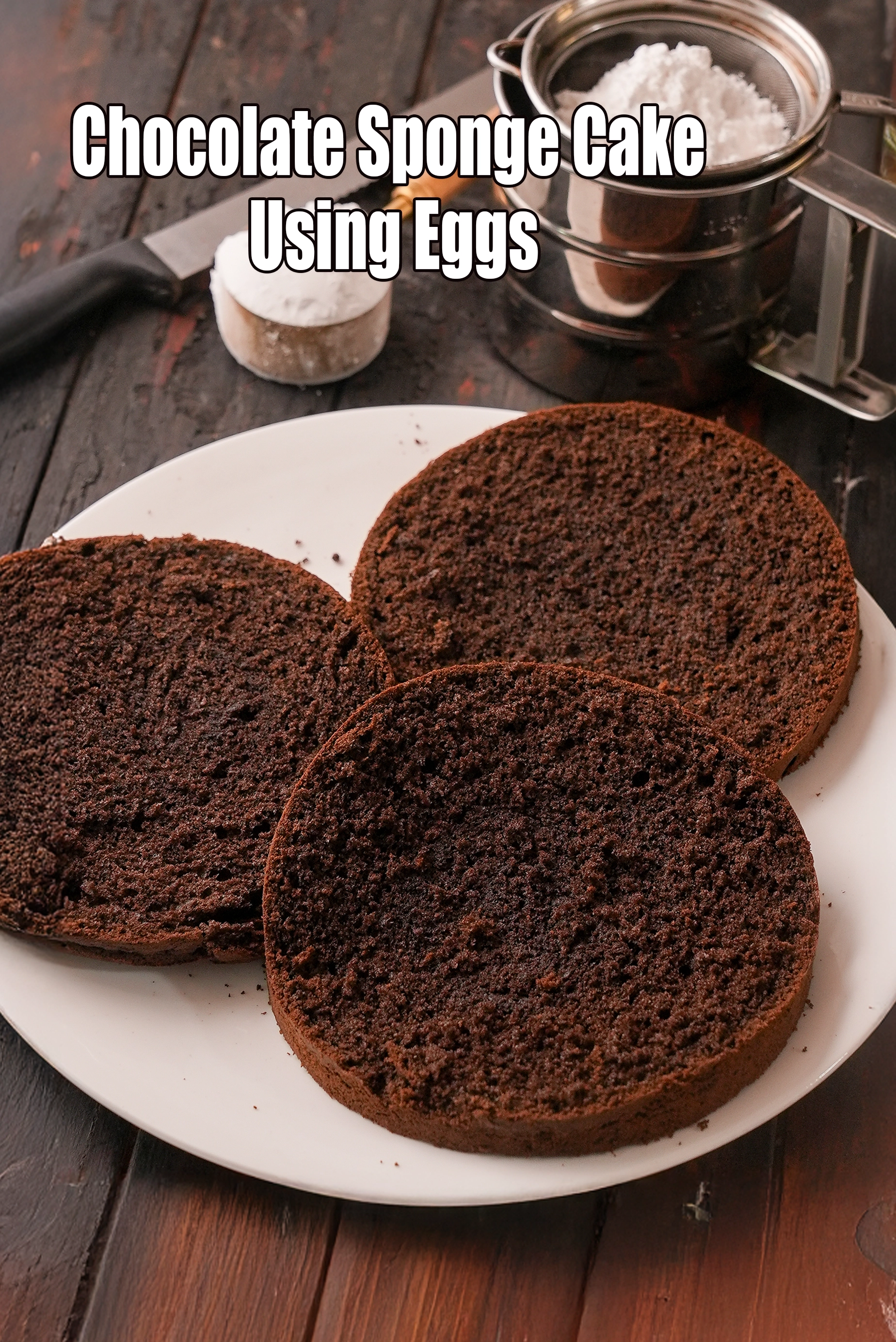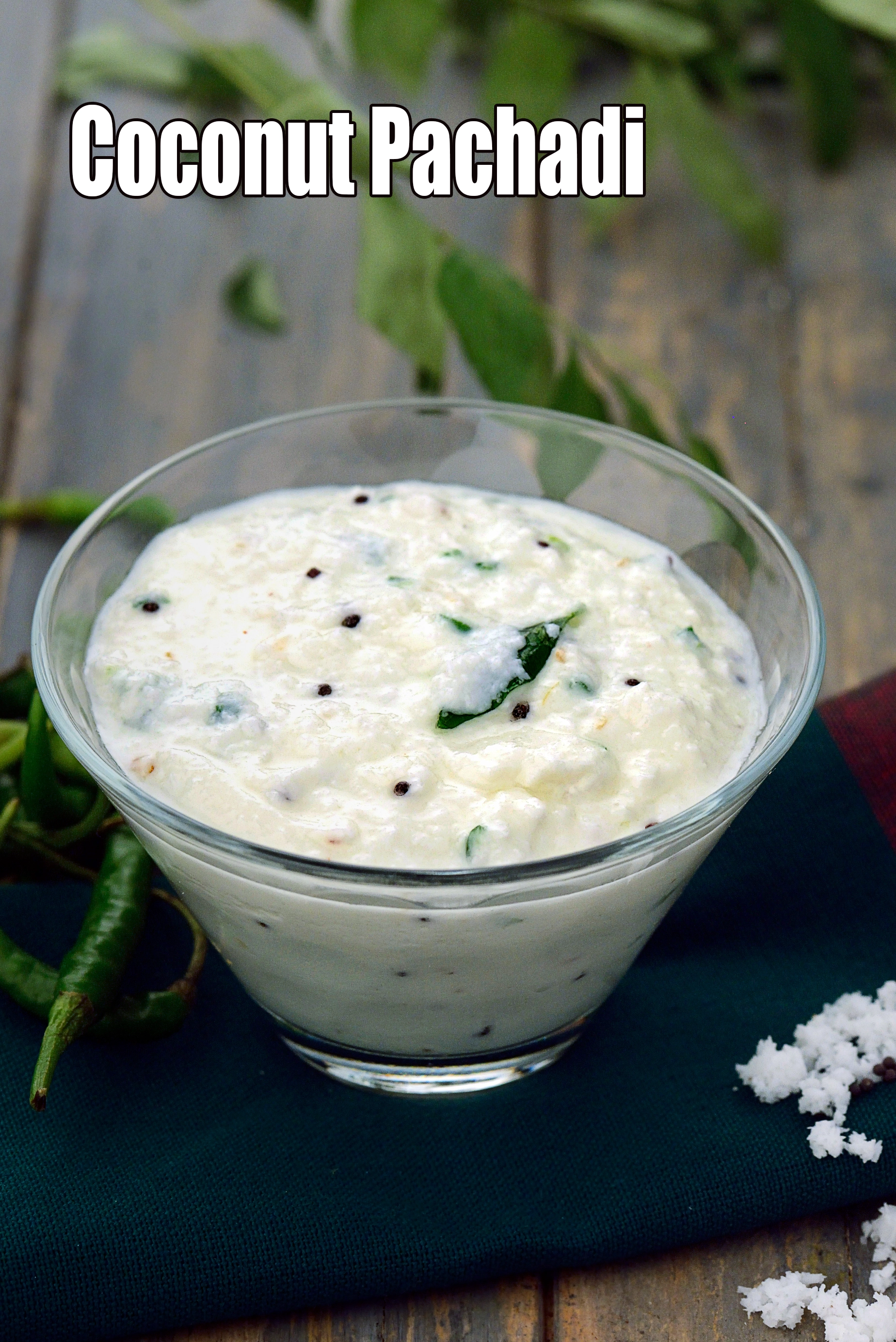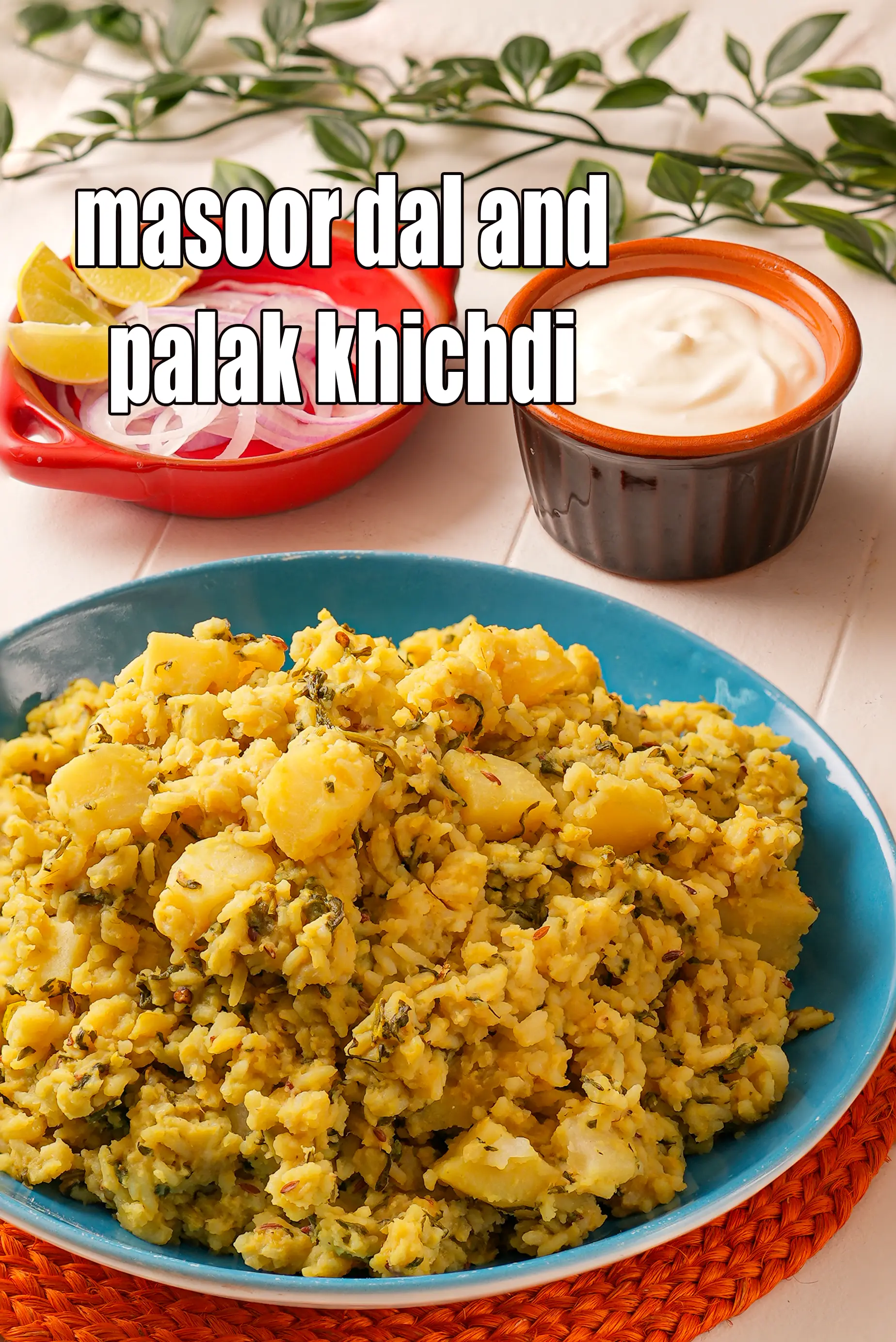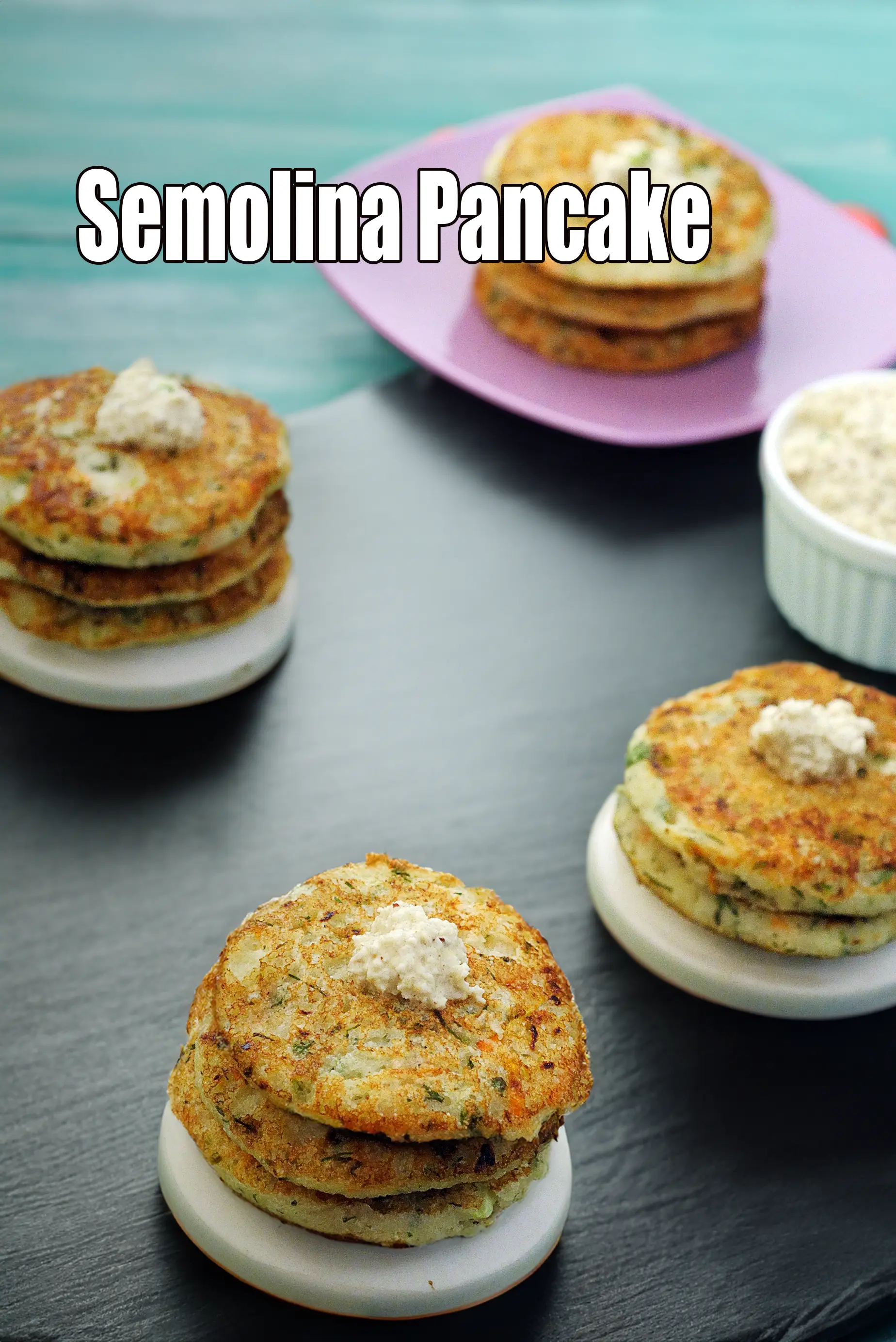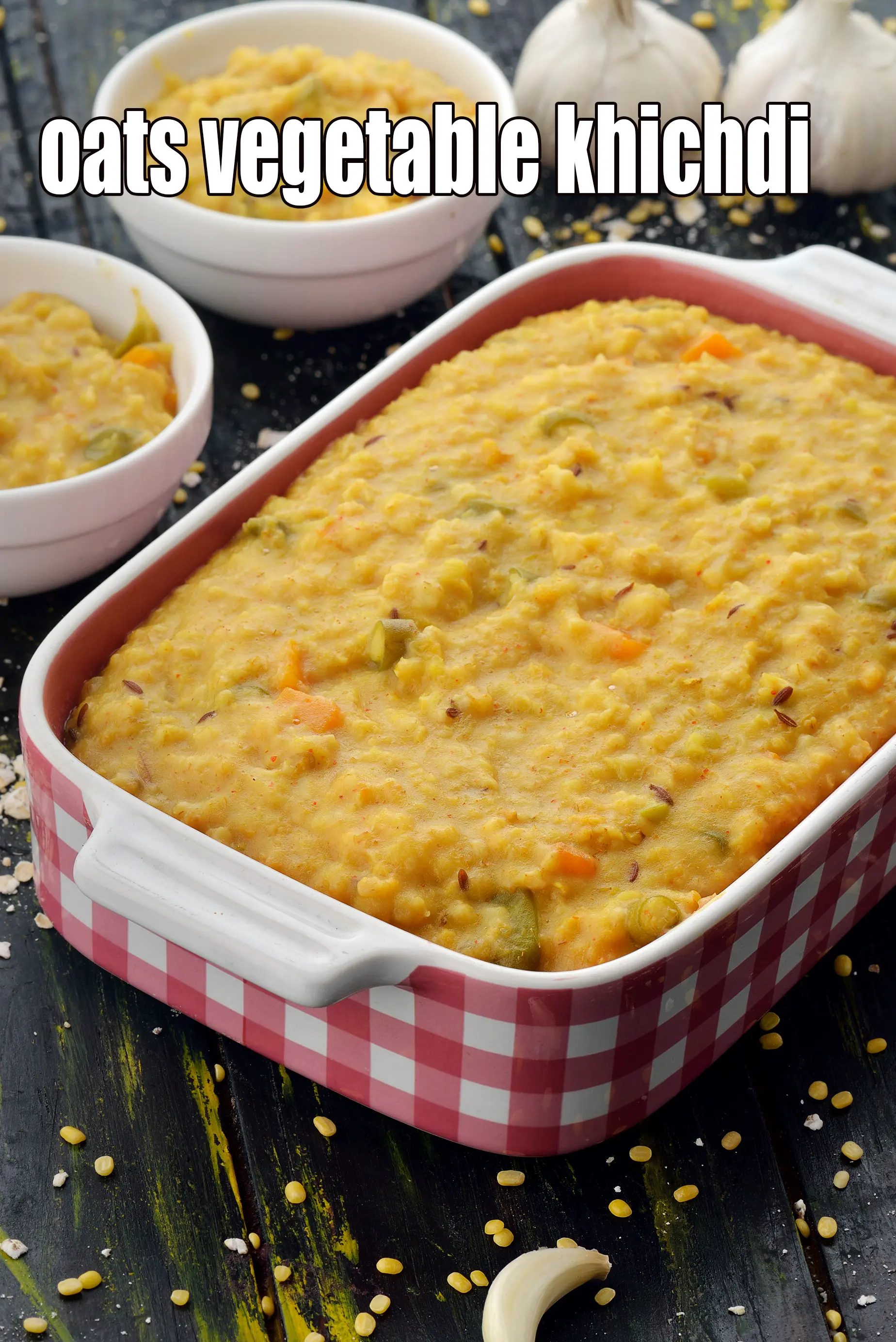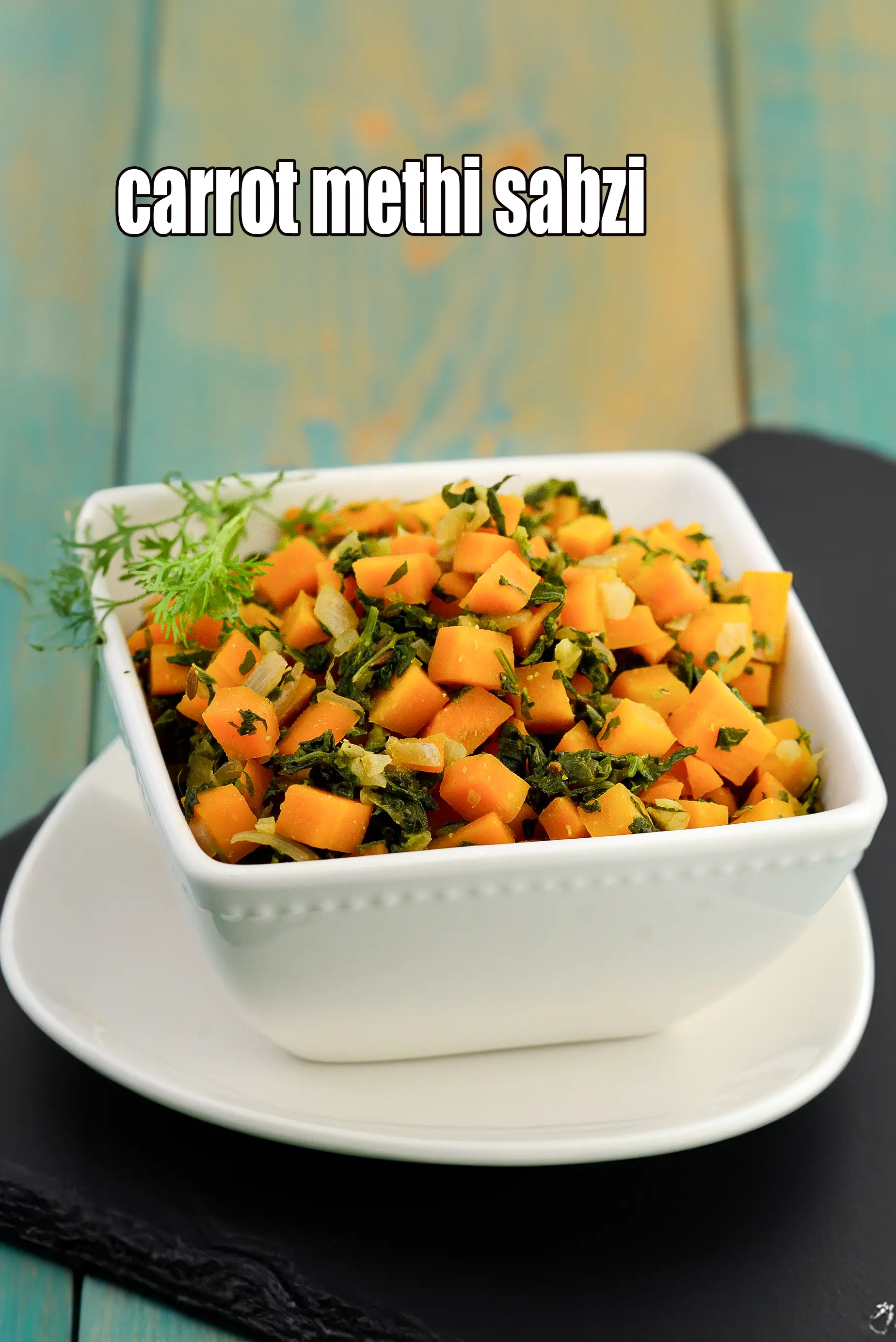Nutritional Facts of Toovar Dal and Mixed Vegetable Masala Khichdi, Calories in Toovar Dal and Mixed Vegetable Masala Khichdi
This calorie page has been viewed 18437 times
How many calories does one serving of Toovar Dal and Mixed Vegetable Masala Khichdi have?
One serving Toovar Dal and Mixed Vegetable Masala Khichdi gives 360 calories. Out of which carbohydrates comprise 25 calories, proteins account for 10 calories and remaining calories come from fat which is 33 calories. One serving Toovar Dal and Mixed Vegetable Masala Khichdi provides about 3 percent of the total daily calorie requirement of a standard adult diet of 2,000 calories.
Click here to see Toovar Dal and Mixed Vegetable Masala Khichdi calories. Delicious masala-stuffed vegetables, rice and dal are carefully cooked together in this one of a kind recipe. A great one dish meal, Toovar Dal and Mixed Vegetable Masala Khichdi when served with buttermilk, also makes a fabulous potluck lunch.
Is Toovar Dal and Mixed Vegetable Masala Khichdi healthy?
Toovar Dal and Mixed Vegetable Masala Khichdi are not good for weight loss, diabetics and weight watchers.
Lets understand the ingredients of Toovar Dal and Mixed Vegetable Masala Khichdi
What's good in this Toovar Dal and Mixed Vegetable Masala Khichdi recipes!
Toor Dal (tuvar dal, arhar dal, toovar dal) : Toor dal is rich in proteins, the building block of good health. It is High in fiber and diabetic and heart friendly also. Being an excellent source of folic acid, pregnant women must include toor dal in their daily diet. Being an excellent source of fibre it helps in preventing and relieving gastric problems like constipation. See detailed benefits of toor dal.
Ghee : Other than calories and fats, the only nutrients that ghee is rich in are the vitamins – all of which are fat-soluble. All the 3 vitamins (Vitamin A, Vitamin E and Vitamin K) are antioxidants which have a role in removing free radicals from the body and protecting our cell as well as help in maintaining skin health and glow. Ghee is an excellent, high-quality selection medium of cooking because of its high smoke point. As compared to most oils and butter, ghee can handle a smoke point of 230°C, 450°F, thus its less prone to oxidant and destruction of nutrients. Yes, ghee does contain cholesterol, but some amount of cholesterol is needed by the body. Cholesterol has some functions to play too. It is necessary for hormone production, brain function, cell health and lubricating the joints. It is, in reality, a high quality fat for the body and brain. Ghee is loaded with fats but that’s medium chain fatty acids (MCT) which aid in weight loss. Ghee is healthy for daibetics in small amounts. Learn to easily make your ghee at home which is free of preservatives. See benefits of ghee.
Hing ( Asafoetida) : The active compound 'coumarin' helps in managing blood cholesterol and triglyceride levels. Asafoetida is known to have anti-bacterial properties, which helps to keep asthma at bay. Asafoetida is an age-old remedy for bloating and other stomach problems like flatulence. The best solution is to gulp down little hing with water or dissolve it in water and sip it. It can also be used along with curd or almond oil as a hair mask. It helps to prevent dryness of hair and smoothen as well as strengthen hair.
Turmeric Powder (Haldi) : Turmeric helps in digestion of food thus helping to overcome indigestion. Haldi may help in reducing the growth of fat cells in the body. Turmeric, being rich in iron, is highly valuable in the treatment of anaemia and both the root as well as the powder should be a regular part of an anaemic diet. One of the health benefits of turmeric is it’s anti-inflammatory property due to the active compound, Curcumin, which helps to relieve inflammation of the joints and thus is a ladder to relieve pain related to arthritis. The curcumin in haldi also helps to ward of the bacteria’s causing cold, cough and throat irritation. Turmeric benefits in diabetes management by lowering blood glucose levels. Its antioxidant and anti-inflammatory effects are useful in the treatment of diabetes patients. It is known to be a good brain food and keep diseases like Alzheimer’s at bay. See here for detailed turmeric benefits.
Onions (pyaz, kanda) : Raw onions are a very valuable source of vitamin C – the immune building vitamin. Along with other phytonutrients from onions, it helps to build WBC (white blood cells) which serves as a line of defence against illness. Yes, it’s a source of many antioxidants, the most important one amongst them being Quercetin. The quercetin in Onions promotes production of HDL (good cholesterol) and lowers total cholesterol in the body. The sulphur in onions act as a blood thinner and prevents blood clotting too. This in turn would lower blood pressure and good for heart, diabetics. Read the benefits of onions.
Brinjal (baingan, eggplant) : Foods like Brinjal have a low glycemic index and good for weight loss. Brinjals are a very good source of fibre. It also prevents blood glucose from shooting up and is good for diabetics. Brinjals are rich in folate, which is required for producing Red Blood Cells (RBC’s) and also helps to prevent anaemia. See all the 7 amazing benefits of baingan.
Green Peas : Green peas are good for weight loss, good source of vegetarian protein, has insoluble fibre to relieve constipation. Legumes like green peas, cow peas, mung, chick peas and kidney beans have a cholesterol lowering effect. Green Peas are rich in Vitamin K which aids in bone metabolism. Green peas have a Glycemic Index (GI) rank of 22 which is low and good for diabetics. Is green peas good for diabetics and see full benefits of green peas.
Coconut : The fresh coconut has saturated fats but most of it is MCT (Medium Chain Triglycerides) which promote weight loss. The high fibre content 13.6 gm (45.3% of RDA) along with high lauric acid content of coconut improves cholesterol levels in the body. Improving the action of insulin secretion and lowering the raised blood sugar levels is yet another benefit of coconut for Diabetics. See here for 10 amazing benefits of coconut.
Coriander (kothmir, dhania) : Coriander is a fresh herb often used as a flavour enhancer in Indian cooking. It is mainly used as a garnish. This is the best way to use it - no cooking. This preserves its vitamin C content which helps to build our immunity and bring that sparkle to the skin. The antioxidants vitamin A, vitamin C and the quercetin present in coriander works towards strengthening our immune system. Coriander is a fairly good source of iron and folate – the 2 nutrient which help in the production and maintenance of red blood cells in our blood. Good for reducing cholesterol and good for diabetics. Read 9 benefits of coriander to understand details.
Benefits of Cumin Seeds ( jeera) : The most common benefit of jeera known to many is to soothe the stomach, intestine and the entire digestive tract. Cumin seeds are apparently a very good source of iron. A tbsp. of cumin seeds can fulfil nearly 20% of days iron requirement. Even small quantity of cumin seeds has huge amounts of calcium – a bone supporting mineral. They aid is digestion, weight loss and help reduce inflammation. See detailed benefits of cumin seeds, jeera.
What's problem in this Toovar Dal and Mixed Vegetable Masala Khichdi recipes!
Rice : Here are the pros for rice. Rice is a great source of complex carbohydrates, which is an important source of energy for our body. Rice is low in fibre and therefore a good option for people suffering from diarrhoea. What's not good in rice. Foods like rice are high in Glycemic index are not suitable for weight loss, heart patients, diabetics as they affect the blood sugar control levels. See details of is white rice and parboiled rice good for you?
Potatoes (Aloo) : Potatoes being high in simple carbohydrates will lead to weight gain and are not good for people with diabetes, heart problem and obesity. Potatoes are recommended for malnourished children and people with low weight. See full details on why potatoes are bad for you.
Sugar : Sugar used in the recipe is also called white poison. It is a simple carbohydrate with zero nutritional value. On intake, sugar will cause inflammation of the body which will last for many hours. It will spike your blood sugar level and shut down the fat burning process. This also causes high blood sugar levels in your body. The development of prediabetes comes from uncontrolled eating sugar and refined food products for many years and the classic symptom is if you have excess belly fat. This leads to diabetes and further onwards to heart attack, high blood pressure, strokes, impotence and kidney damage.
What is a healthier option than using rice?
We suggest the following healthy khichdi like fada ni khichdi recipe, vitamin khichdi recipe, buckwheat moong dal and vegetable khichdi, bajra moong and green peas khichdi, barley khichdi and vegetable biryani from brown rice. Most of these recipes have ZERO usage of rice and portion control is suggested for diabetics.
You can have Buttermilk, Chaas as a perfect accompainment to this Toovar Dal and Mixed Vegetable Masala Khichdi.
What is the healthy option for Toovar Dal and Mixed Vegetable Masala Khichdi?
Can diabetics, heart patients and over weight individuals have Toovar Dal and Mixed Vegetable Masala Khichdi?
No, this recipe is not healthy and good for diabetics, heart and weight loss.
Can healthy individuals have Toovar Dal and Mixed Vegetable Masala Khichdi?
No, this is not healthy khichdi.
Toovar Dal and Mixed Vegetable Masala Khichdi is high in these.
1. Vitamin C : Vitamin C is a great defence against coughs and colds.
2. Magnesium : Magnesium is required for formation of bones and teeth. It helps in the metabolism of calcium and potassium.
3. Phosphorous : Phosphorous works closely with calcium to build bones.
4. Vitamin B1 : Vitamin B1 protects nerves, helps in carbohydrate metabolism, prevents heart diseases and helps produce red blood cells.
5. Fiber : Dietary fiber reduce the risk of heart disease, prevent the spike in blood sugar levels and hence super for diabetics. Consume more fruits, vegetables, moong, oats, matki, whole grains.
8 Pointers to get healthy on a Indian diet.
1. Eat healthy and say yes to good home cooked food. Prefer whole grains like oatmeal, quinoa, buckwheat, barley and healthy flours like bajra flour, jowar flour, quinoa flour, wheat flour etc. rather than refined ones like maida. Have healthy Indian fats like ghee, coconut, coconut oil in your diet.
2. Opt out of junk food, packaged food, deep fried foods. Prefer steamed snacks and other non-fried snacks. Check out some Healthy Indian Snacks. Remember to eat small frequent meals through the day as that will keep you always full and prevent your blood sugar from dropping. By starving your body through some diet, will not help you one bit. In fact, dieting will make you binge on 2 to 3 meals which is not good.
Skip having Indian junk foods like pav bhaji, bata vada, pakoras, gulab jamun as they cause your body to have insulance resistance. The resultant is your body will store more carbohydrates as fats, causing storage of fat in the stomach causing a paunch and slowing down of our fat burning process. So its a bad cyle which causes you more more hunger and fatigue every time you eat junk food.
3. Have 4 to 5 servings of vegetables and 2 to 3 servings of fruit is a must. Follow the logic of a vegetable in each main meal of the day and a fruit in-between meals. Check out a few Healthy Indian Soups and Healthy Indian Salads recipes using this food group.
4. Cut down on sugar and salt in your diet and pick honey ( very small amounts) or dates to sweeten your food. Slowly cut the sugar habit as this is not going to happen over night. Sugar is also called white poison. It is a simple carbohydrate with zero nutritional value. On intake, sugar will cause inflammation of the body which will last for many hours. It will spike your blood sugar level and shut down the fat burning process. This also causes high blood sugar levels in your body. The development of prediabetes comes from uncontrolled eating sugar and refined food products for many years and the classic symptom is if you have excess belly fat. This leads to diabetes and further onwards to heart attack, high blood pressure, strokes, impotence and kidney damage.
Salt and blood pressure. Apart from stress and obesity, one of the main reasons for high blood pressure is excessive sodium and salt intake. Most people find it difficult to limit the amount of salt in their cooking, thinking it will affect the taste of their favourite dishes.
This is not true. Bajra and jowar are rich in potassium and critical for those with High Blood Pressure as it lessens the impact of sodium. Eating more Potassium Rich Foods will remove more sodium from your body through urine. So include the basic bajra roti and jowar roti in your daily diet to have with Lower Blood Pressure Subzis Recipes.
5. Befriend a few healthy seeds and nuts like chia seeds, flax seeds, sesame seeds, walnuts and almonds. Stress. The easiest way to kill your immune system is chronic stress.
6. Sprouts are called ‘living food’. They are high is most nutrients and easy to digest as well. Let them feature in your meals at least thrice a week. Also Read : All Benefits about Sprouts.
7. Exercise 45 minutes every day. No excuse. You can walk fast, run, do weights, play your favourite sport or go to the gym. No activity reduces muscle tissue which will lead to muscke loss and all kinds of problems with that. Workout builds immunity and keeps virus or bugs away.
8. Sleep early and get up early. Get your body into rhythm and it will function best. Sleep helps your body to recover and makes you look much younger. Also getting good sleep prevent muscle loss, builds immunity and keeps virus or bugs away.
How to burn 360 calories that come from Toovar Dal and Mixed Vegetable Masala Khichdi?
Walking (6 kmph) = 1 hour 42 mins
Running (11 kmph) = 36 mins
Cycling (30 kmph) = 48 mins
Swimming (2 kmph) = 1 hour 2 mins
Note: These values are approximate and calorie burning differs in each individual.
| Energy | 360 cal |
| Protein | 9.1 g |
| Carbohydrates | 62 g |
| Fiber | 8.2 g |
| Fat | 8.4 g |
| Cholesterol | 0 mg |
| Vitamin A | 236.8 mcg |
| Vitamin B1 | 0.2 mg |
| Vitamin B2 | 0.1 mg |
| Vitamin B3 | 2.1 mg |
| Vitamin C | 18.2 mg |
| Folic Acid | 38.3 mcg |
| Calcium | 53.4 mg |
| Iron | 1.6 mg |
| Magnesium | 80.9 mg |
| Phosphorus | 205.2 mg |
| Sodium | 17.1 mg |
| Potassium | 421.1 mg |
| Zinc | 1.2 mg |
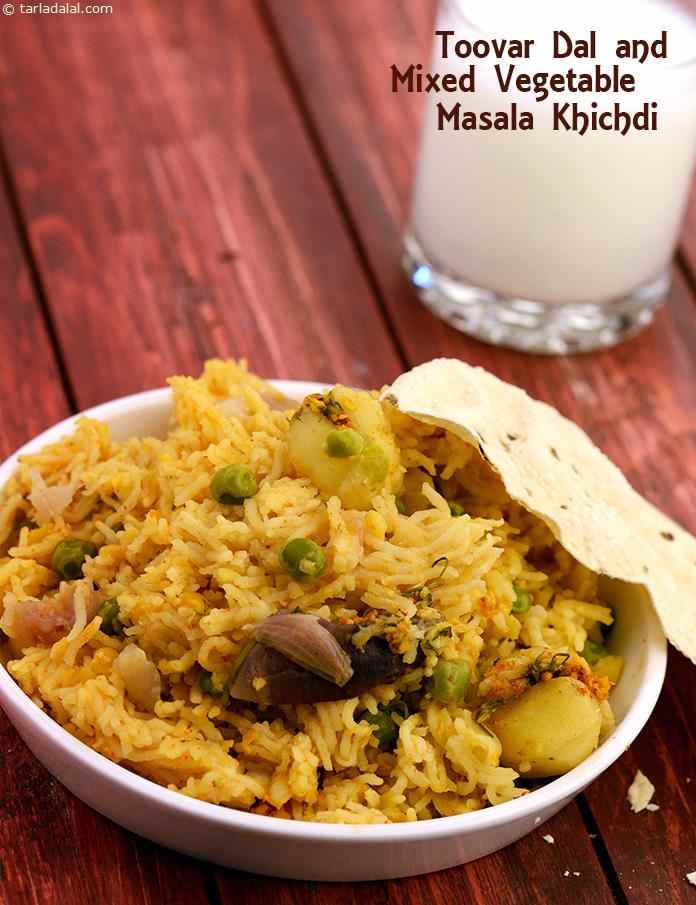
Click here to view Toovar Dal and Mixed Vegetable Masala Khichdi
Calories in other related recipes
